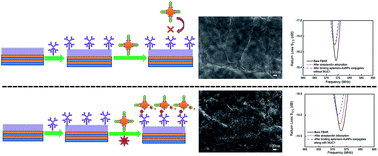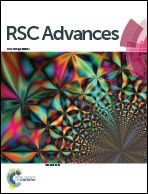A biosensor based on a film bulk acoustic resonator and biotin–avidin system for the detection of the epithelial tumor marker mucin 1
Abstract
AlN thin film bulk acoustic resonators (FBARs) with a resonant frequency of ∼575 MHz have been fabricated to function as an epithelial tumor marker mucin 1 (MUC1) biosensor. Streptavidin was assembled on the sensitive area of FBAR. After the recognition between aptamers–AuNP conjugates and MUC1, biotin, along with the conjugates, was captured by streptavidin onto the surface of FBARs. Therefore, the target MUC1 could be sensitively detected. This biosensor exhibited a good linear relationship between the frequency shifts and the concentrations of MUC1 ranging from 30 to 500 nM, which indicated the sensitivity is about 818.6 Hz nM−1. The frequency shift remained relatively stable when the concentration of MUC1 was greater than 500 nM since the binding between MUC1 and aptamers–AuNP conjugates reached saturation. The selectivity experiment demonstrated that this biosensor can precisely detect MUC1 with good specificity. The positive results suggest that FBAR is an attractive alternative to a new approach for the detection of MUC1.


 Please wait while we load your content...
Please wait while we load your content...